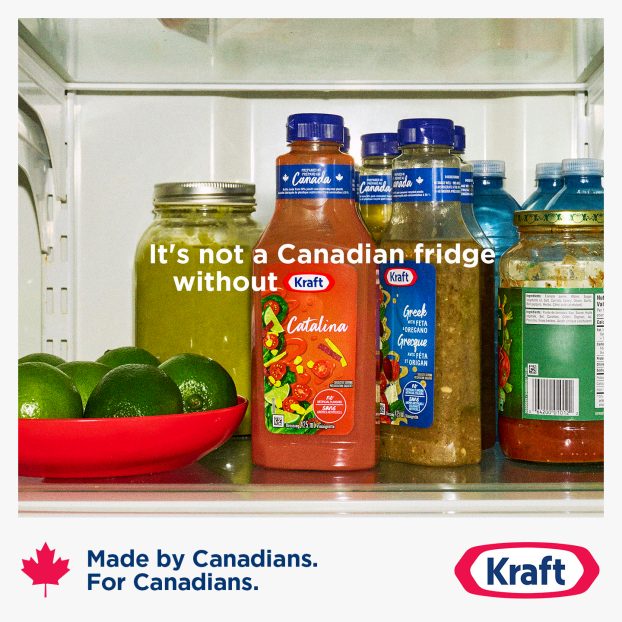When Tony Parsons strums flamenco music on his guitar in a promotional ad for tv station bctv, marketers hope viewers see another dimension of the famous news anchor.
Parsons has so far been seen as having a dry delivery rather than a lyrical one.
The tv spot is part of an overall campaign designed to reposition bctv, the 34-year-old television station that has long been the leader in b.c., with a signal that reaches 97% of the market.
No longer can a cute jingle and the bold assertion that ‘We’re Number One’ glue viewers to the tube.
With the increasing number of cable and satellite signals available, and a future in which fans of Seinfeld or Grace Under Fire will be able to download episodes from the Internet, the competition is becoming too stiff to use traditional marketing methods.
‘We already know that people watch programming, not television stations,’ says Johnny Michel, the executive producer in charge of overseeing the current branding campaign that began in September and will be rolled out over the next five years.
Michel says successful shows from the u.s. can hop from one network to another year after year, so the only alternative for a broadcaster is to establish territory.
The goal is to change viewers’ perceptions that bctv is just a news station.
Its evening newscast captures almost 600,000 viewers nightly, making it the most-watched regional newscast in Canada and the fourth most-watched in North America.
But while Michel wants to convince viewers there is a strong entertainment component, he also wants to prove that the people who run the station have an innate understanding of the priorities of those same viewers.
What he wants is the same market cachet enjoyed by Toronto’s Citytv and being earned by Vancouver competitor u.tv, which went through its own repositioning in 1990-91.
The branding of bctv began with the slug ‘TV for BC’ in a campaign promoting the kind of programming offered: drama, comedy, news and sports.
Each genre was stylishly illustrated – respectively, a king, a court jester, an aggressive reporter, and swimmers.
The campaign, by BBDO, Vancouver, was designed to augment the station’s 55-plus core audience with an increased number of younger viewers.
But close on its heels was the main thrust of the campaign – the ‘TV for Me’ pitch – which was designed to overcome the main challenge to marketers.
Michel says British Columbians are more interested in their individual pursuits that are tied to the region’s outstanding physical environment than supporting the notion that we should all be one happy family.
Michel, who was involved in the repositioning of u.tv, says people in b.c. are protective of their lifestyle.
So, the campaign, which runs the gamut of television, outdoor advertising, print and radio, depicts real, off-the-street British Columbians doing what they like most when enjoying their environment.
For example, there are television spots running featuring a female rollerblader, a happy elderly couple, and a young woman doing a Chinese lion dance, all of whom say that bctv is ‘TV for Me.’
New spots starting in May feature a hang-glider, a trio of nurses, an equestrian and a toddler, people who were picked from a contest asking people to explain on video what bctv means to them.
The ‘TV for Me’ concept even extends to the newscasters in an attempt to warm up their cold and stodgy images.
That reputation is applied especially to main news reader Tony Parsons, who tries to build a multidimensional persona through spots featuring him playing his classical guitar (Tony unplugged), and, more recently, an electric guitar (Tony plugged in.)
Anchor Pamela Martin is shown playing a piano, while sports commentator Bernie Pascal goes fishing, and Barry Houlihan, another sports reader, shoots some pool.
Weatherman Norm Grohmann is shown in a golf-inspired segment, while daytime and backup anchors Deborah Hope and Jennifer Mathers are shown, respectively, coaching soccer and playing with dogs.
Michel says the goal is to show these people who bring the news to be ‘real’ people who have an equal interest in enjoying the quality of life offered by b.c.
‘It provides a different face to them rather than your basic tight shot,’ he says.
Because the campaign is so wide-ranging and new, there is not yet any feedback showing how the station has done in changing viewers’ perceptions, account supervisor Hilary Carder at bbdo, says.
The image campaign, though, was a recent finalist at the prestigious New York Festival, which celebrates television programming, and won awards at a recent Can Pro event, which celebrates independent television in Canada.
Carder will go back to focus groups early this summer to assess the success of the campaign.
Whatever the results, though, successful branding will mean viewers feel the station is showing them what is actually happening in their own backyards.
‘TV for B.C.’ is a unique position that only bctv can own,’ Carder says.
‘Because of the increased competition, the more strongly branded the station becomes, the more likely it is to differentiate itself in the market,’ she says.























